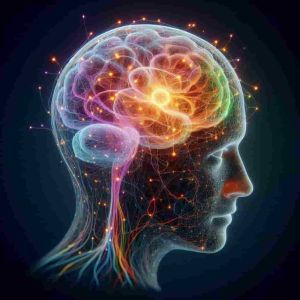Neurological Disorders

Neurological disorders are a broad category of conditions that affect the nervous system, which includes the brain, spinal cord, and nerves. These disorders can impact movement, cognition, sensation, and other functions. There are hundreds of neurological disorders, each with its own set of symptoms, causes, and treatments. Below is a detailed exploration of neurological disorders:
Overview[edit | edit source]
Neurological disorders encompass a wide range of conditions that affect the nervous system. These disorders can be caused by genetic factors, environmental influences, infections, or injuries. They can lead to physical, cognitive, emotional, and behavioral symptoms, and their impact can vary from mild to severe.
Types of Neurological Disorders[edit | edit source]
Neurological disorders can be categorized into several types based on their characteristics and symptoms:
- Neurodegenerative Disorders: These conditions involve the progressive degeneration of the structure and function of the nervous system. Examples include:
- Alzheimer's Disease: A common cause of dementia characterized by memory loss, cognitive decline, and personality changes.
- Parkinson's Disease: A movement disorder that causes tremors, stiffness, and difficulty with balance and coordination.
- Multiple Sclerosis: A condition where the immune system attacks the protective covering of nerves, leading to a range of symptoms including muscle weakness and coordination problems.
- Neuromuscular Disorders: These conditions affect the muscles and the nerves that control them. Examples include:
- Muscular Dystrophy: A group of genetic disorders that cause progressive muscle weakness and degeneration.
- Amyotrophic Lateral Sclerosis (ALS): Also known as Lou Gehrig's disease, it causes the degeneration of motor neurons, leading to muscle weakness and eventual paralysis.
- Brain Disorders: These conditions affect the brain and can lead to a variety of symptoms. Examples include:
- Epilepsy: A disorder characterized by recurrent seizures due to abnormal electrical activity in the brain.
- Stroke: A condition where blood flow to a part of the brain is interrupted, causing brain cells to die and leading to symptoms such as paralysis and speech difficulties.
- Traumatic Brain Injury (TBI): Damage to the brain caused by a blow or jolt to the head, which can result in cognitive, physical, and emotional impairments.
- Spinal Cord Disorders: These conditions affect the spinal cord and can lead to a range of symptoms. Examples include:
- Spina Bifida: A birth defect where there is incomplete closing of the backbone and membranes around the spinal cord.
- Spinal Cord Injury: Damage to the spinal cord that can result in loss of sensation, movement, and other functions below the site of injury.
- Peripheral Nerve Disorders: These conditions affect the peripheral nerves, which connect the central nervous system to the rest of the body. Examples include:
- Peripheral Neuropathy: Damage to the peripheral nerves, often causing weakness, numbness, and pain, typically in the hands and feet.
- Carpal Tunnel Syndrome: A condition where the median nerve is compressed at the wrist, leading to pain, numbness, and tingling in the hand.
Symptoms of Neurological Disorders[edit | edit source]
The symptoms of neurological disorders can vary widely depending on the specific condition and its severity. Common symptoms include:
- Pain: Headaches, back pain, neck pain, and other types of pain.
- Muscle Movement Issues: Weakness, stiffness, tremors, spasms, paralysis, and coordination challenges.
- Sensitivity Changes: Numbness, tingling, hypersensitivity to touch and temperature, and loss of feeling.
- Cognitive and Emotional Symptoms: Memory loss, confusion, mood changes, and difficulty with concentration.
- Coordination and Balance Problems: Difficulty maintaining balance, frequent falls, and challenges with fine motor skills.
Diagnosis of Neurological Disorders[edit | edit source]
Diagnosing neurological disorders typically involves a combination of medical history, physical examination, and diagnostic tests:
- Medical History: Gathering information about symptoms, medical history, and family history.
- Physical Examination: Assessing muscle strength, reflexes, coordination, and other physical signs.
- Imaging Tests: MRI, CT scans, and other imaging techniques to visualize the brain, spinal cord, and nerves.
- Electrodiagnostic Tests: EMG (electromyography) and nerve conduction studies to assess the electrical activity of muscles and nerves.
- Blood Tests: To identify underlying conditions such as infections, metabolic disorders, and genetic abnormalities.
- Lumbar Puncture: To analyze cerebrospinal fluid for signs of infection, inflammation, or other abnormalities.
Treatment and Management[edit | edit source]
Treatment of neurological disorders depends on the specific condition and its severity. Common approaches include:
- Medications: Drugs to manage symptoms, reduce inflammation, or slow disease progression.
- Physical Therapy: Exercises and rehabilitation to improve strength, mobility, and function.
- Occupational Therapy: Assistance with daily activities and improving quality of life.
- Surgical Interventions: Procedures to relieve pressure on nerves, repair damaged nerves, or remove tumors.
- Lifestyle Changes: Diet, exercise, and other lifestyle modifications to support overall health and well-being.
- Supportive Care: Counseling, support groups, and other resources to help patients and their families cope with the challenges of neurological disorders.
Prognosis and Long-Term Management[edit | edit source]
The prognosis for neurological disorders varies widely based on the specific condition, its severity, and the effectiveness of treatment. Early diagnosis and intervention can significantly improve outcomes. Long-term management may involve ongoing medical care, rehabilitation, and support services to help patients maintain their quality of life.
Conclusion[edit | edit source]
Neurological disorders are complex and diverse, affecting millions of people worldwide. Understanding the causes, symptoms, diagnosis, and treatment options is essential for effective management and improving the lives of those affected. Ongoing research continues to advance our knowledge and develop new therapies for these challenging conditions.